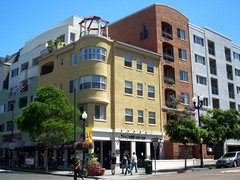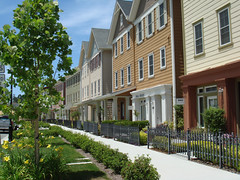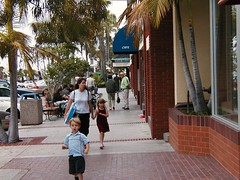Estimating the impacts of smart growth: the importance of forecasting traffic correctly

Posted July 1, 2010 at 1:31PM
The metropolitan planning organization for the region surrounding San Diego has adopted a new methodology for predicting the impacts of development. The more sophisticated model that the metro Association of Governments will now use more accurately reflects the differences between walkable neighborhoods and conventional suburban development. (This is another seriously wonky post, but it’s an important one.)
Before considering new development for approval, regulating authorities generally require an assessment of the likely transportation impacts, particularly on traffic. If new housing, shops and/or jobs are likely to create additional driving trips,  it is important to know that in advance, both to assess the merits of the project and the potential need for additional infrastructure.
it is important to know that in advance, both to assess the merits of the project and the potential need for additional infrastructure.
The problem is that almost all jurisdictions in the US employ a forecasting methodology (“model”) that has not changed much since the 1970s and that fails to account for the considerable effects that differing particular characteristics of development can have on the outcome. For example, research reported here in 2008 from metropolitan Philadelphia, Washington, Portland, and San Francisco determined that, on average, transit-oriented development reduces car trips by 49 percent in the morning peak period and 48 percent in the evening peak, compared to what would be expected from standard engineering estimates typically used by municipalities. Ewing and Cervero’s painstaking review of 50 published studies found that increasing any of five factors associated with smart growth – destination accessibility, street connectivity, transit access, mix of uses, and neighborhood density – can reduce driving per capita compared to conventional suburban development.
But if the travel forecasting model does not reflect the extent to which walkable, well located neighborhood development reduces driving, the result could be inflated traffic predictions that disfavor good proposals,  leading to disproportionate fears on the part of nearby residents or regulatory disadvantages. These could take the form of higher impact fees, exactions and negotiated payments, or even disapproval altogether.
leading to disproportionate fears on the part of nearby residents or regulatory disadvantages. These could take the form of higher impact fees, exactions and negotiated payments, or even disapproval altogether.
To address this problem, last year the federal EPA commissioned a study to more properly account for the impacts of mixed use and the other smart neighborhood characteristics noted above on traffic. The transportation consultancy Fehr & Peers, which led the study, found the following:
“The study evaluated household travel surveys from 239 mixed-use developments in Seattle, Portland, Sacramento, Houston, Atlanta and Boston and found statistical relationships between site characteristics and the amount of vehicle travel generated in and out of the site. MXDs were found to reduce traffic impacts relative to single-use suburban development, due to the following key factors such as diverse on-site activities that capture a large share of trips internally, placement within walkable areas with good transit access that generate high shares of walk and transit trips, and central locations that reduce trip lengths.”
The result was the construction of a complex trip generation equation, called ‘MXD’ (for mixed-use development) and explained in part here.  The equation more accurately predicts the amount of driving that a development will create and corrects the deficiencies of outmoded models. The development of MXD was led by Reid Ewing at the University of Utah and Jerry Walters at Fehr & Peers.
The equation more accurately predicts the amount of driving that a development will create and corrects the deficiencies of outmoded models. The development of MXD was led by Reid Ewing at the University of Utah and Jerry Walters at Fehr & Peers.
Last week, the Board of the San Diego Association of Governments approved the MXD method as the preferred means of adjusting trip generation estimates to account for the effects of smart growth. Fehr & Peers reports that the method is also under review by the Institute of Transportation Engineers for wider adoption, and that it is undergoing evaluation by panels of experts and practitioners in California as part of a study to assess its acceptability for use in development reviews required under state law. This is good news for walkable neighborhoods and accurate environmental assessments.
Move your cursor over the images for credit information.